Related Research Articles

The House of Stuart, originally Stewart, was a royal house of Scotland, England, Ireland and later Great Britain. The family name itself comes from the office of High Steward of Scotland, which had been held by the family scion Walter fitz Alan. The name "Stewart" and variations had become established as a family name by the time of his grandson, Walter Stewart. The first monarch of the Stewart line was Robert II whose descendants were kings and queens of Scotland from 1371 until the union with England in 1707. Mary, Queen of Scots was brought up in France where she adopted the French spelling of the name, Stuart.

Earl of Airlie is a title of the peerage in Scotland created on 2 April 1639 for James Ogilvy, 7th Lord Ogilvy of Airlie, along with the title “Lord Ogilvy of Alith and Lintrathen.” The title “Lord Ogilvy of Airlie” was then been created on 28 April 1491.

Clan Mackay is an ancient and once-powerful Highland Scottish clan from the far North of the Scottish Highlands, but with roots in the old Kingdom of Moray. They supported Robert the Bruce during the Wars of Scottish Independence in the 14th century. In the centuries that followed they were anti-Jacobite. The territory of the Clan Mackay consisted of the parishes of Farr, Tongue, Durness and Eddrachillis, and was known as Strathnaver, in the north-west of the county of Sutherland. However, it was not until 1829 that Strathnaver was considered part of Sutherland when the chief sold his lands to the Earls of Sutherland and the Highland Clearances then had dire consequences for the clan. In the 17th century the Mackay chief's territory had extended to the east to include the parish of Reay in the west of the neighbouring county of Caithness. The chief of the clan is Lord Reay and the lands of Strathnaver later became known as the Reay Country.

Clan Mackintosh is a Scottish clan from Inverness in the Scottish Highlands. The chiefs of the clan are the Mackintoshes of Mackintosh. Another branch of the clan, the Mackintoshes of Mackintosh-Torcastle, are the chiefs of Clan Chattan, a historic confederation of clans.
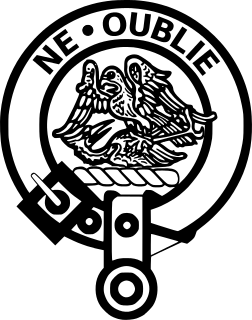
Clan Graham is a Scottish clan who had territories in both the Scottish Highlands and Lowlands.

Clan Murray is a Highland Scottish clan. The chief of the Clan Murray holds the title of Duke of Atholl. Their ancestors who established the family in Scotland in the 12th century were the Morays of Bothwell. In the 16th century descendants of the Morays of Bothwell, the Murrays of Tullibardine, secured the chiefship of the clan and were created Earls of Tullibardine in 1606. The first Earl of Tullibardine married the heiress to the Stewart earldom of Atholl and Atholl therefore became a Murray earldom in 1626. The Murray Earl of Atholl was created Marquess of Atholl in 1676 and in 1703 it became a dukedom. The marquess of Tullibardine title has continued as a subsidiary title, being bestowed on elder sons of the chief until they succeed him as Duke of Atholl.

Clan Drummond is a Highland Scottish clan. The surname is rendered "Druimeanach" in modern Scottish Gaelic.

Clan Leslie is a Lowland Scottish clan.
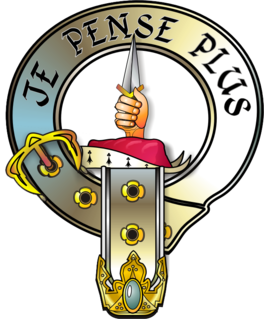
Clan Erskine is a Lowland Scottish clan.
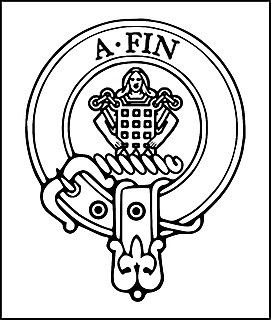
Clan Ogilvy/Ogilvie is a Scottish clan. The Ogilvy family originate in Angus, Scotland. Gillebride, Earl of Angus, received a Barony from King William the Lion in 1163 and bestowed the lands of Ogilvy upon his son Gilbert. Of this extraction, Patrick de Ogilvy later swore fealty to the Hammer of the Scots and appears on the Ragman Rolls of 1296. His son Sir Patrick Ogilvie in turn received a charter from Robert the Bruce for the lands of Kettins. In 1491, King James IV elevated Sir James Ogilvy to the ranks of the peerage as Lord Ogilvy of Airlie.
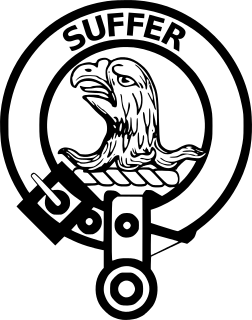
Clan Haldane is a Lowland Scottish clan.
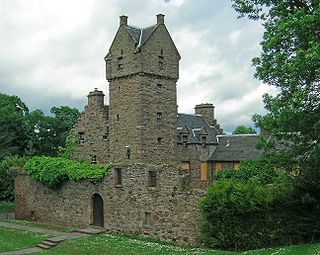
Mains Castle is a 16th-century castle in Dundee, Scotland. The castle consists of several buildings surrounding a courtyard, although several of the original western buildings no longer exist. The northern and eastern buildings are where the family would have lived, with the servants occupying the southern quarters. The castle also has a large, six-floor, square tower house with dressed cornerstones, which is typical of 16th-century construction. It is a Category A listed building.

Clan Sandilands is a Scottish clan. It is also considered a sept of the larger Clan Douglas.
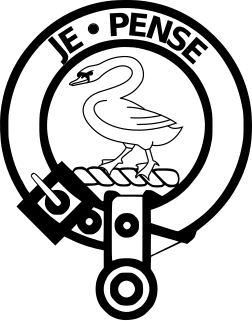
Clan Wemyss is a Lowland Scottish clan.
Robert Lauder of The Bass was an important noble in Haddingtonshire, the Merse, and Fife. Stodart remarks that "to 1600 the barons of the Bass sat in almost every parliament". He was a firm supporter of Mary, Queen of Scots whom he accompanied to Carberry Hill on 14 June 1567, and fought for at the battle of Langside.
William Graham, 1st Earl of Montrose was a Scottish Lord of Parliament, who was raised to an earldom by James IV of Scotland and who died with his monarch at the Battle of Flodden.

The Mackays of Aberach also known as the Clan Aberach are a Scottish family and a branch of the ancient Clan Mackay of the Scottish Highlands. They were the senior cadet branch of the Clan Mackay and were seated at Achness, in Strathnaver, which is in modern-day Sutherland. In Scottish Gaelic they are known as the Sleaght-ean Aberigh.
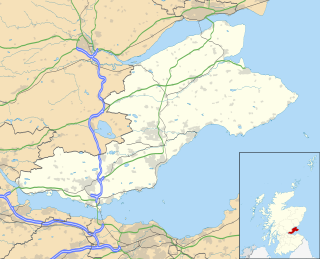
The Barony of Denboig is a Scottish feudal barony Parish in the county of Fife in Scotland. In the medieval period the church and parish of Dunbog originally belonged to the Abbey of Arbroath in Angus. Arbroath or Aberbrothock Abbey was initially a Cluniac Priory founded by King William the Lion in 1178, later, around 1233, it was taken over by Tironsian monks from Kelso Abbey. Arbroath Abbey is famed as the site of the signing of the Declaration of Independence in 1320. Within the parish of Dunbog stood the Cistercian Priory of Cadvan, a cell of nearby Balmerino Abbey. Balmerino Abbey which lies on the shores of the River Tay, across from Dundee, was founded as a Cistercian house by the widow of King William the Lion in 1236. The only building of historical significance in modern Dunbog is Dunbog Mansion house which is built on the site of Cadvan Priory. At one point it was occupied by Cardinal David Beaton [born 1494- died 1546].
The Barony of Grougar is a Scottish feudal barony which lies in north Ayrshire in the district formerly known as Cunninghame. The earliest known family likely to have owned Grougar were the De Morvilles who were there in the twelfth and thirteenth centuries before the reign of Robert the Bruce. The De Morvilles originated in Morville, Department of Manche, Normandy, arrived in England in the wake of the Norman Conquest, settled in Burg, Cumbria, and later moved to Scotland in the early 12th century where they were granted land in Ayrshire. This land grant precedes the establishment of the Register of the Great Seal of Scotland so cannot be positively confirmed. Hugo de Morville who died in 1202 was the Constable of Scotland. By the late thirteenth century the Logan family were barons of Grougar. Thorbrand de Logan baron of Grougar is recorded in 1272 and a John de Logan of Grugar may be the John Logan described as ‘one of the king of England's enemies’ in 1307 during the Wars of Independence.
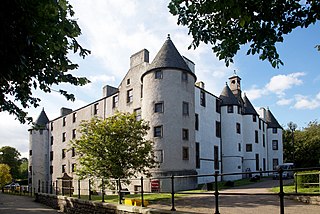
James Scrimgeour Scottish landowner and Constable of Dundee.
References
- Burke, J. (1838). A Genealogical and Heraldic History of the Commoners of Great Britain and Ireland Enjoying Territorial Possessions Or High Official Rank: But Uninvested with Heritable Honours. 3. Colburn. p. 121. Retrieved 2015-11-13.